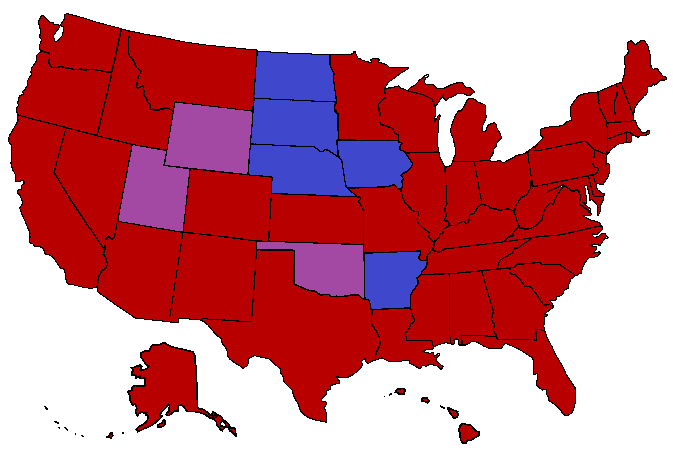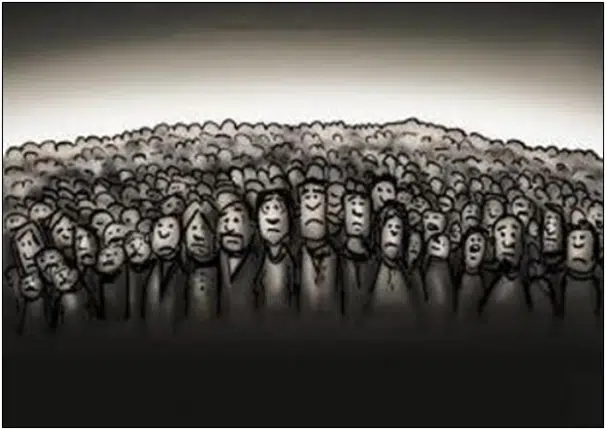In order to combat the Chinese coronavirus and to save as many lives as possible, 42 states have issued stay at home orders, and another three have some parts of their states closed, in order to combat the Chinese coronavirus. All 50 states have schools closed. In addition, with the national emergency declared by President Donald Trump, including the overseas travel bans to China and Europe, social distancing, private sector testing and treatments being authorized on an emergency basis, the White House coronavirus task force has credited these closures in part with helping to slowing the total number of cases, which in turn has, according to the models touted by the medical community, already saved hundreds of thousands of lives.
Countries all over the world have resorted to similar national lockdowns in order to win the war on the virus. The unfortunate side effect of the closures is the U.S. and global economies have effectively been shut down except for essential services, resulting in exceptionally high levels of unemployment. In the U.S., anywhere from 17 million to 20 million jobs have already been lost, with many more to come for every week the economy remains closed.
At some point, though, the pandemic will end and the economy will reopen. But, just as it took all 50 states to get to the point of a national lockdown, so too will it take all 50 states to reopen when individual state governors determine it is safe to do so.
For as much as journalists keep asking President Trump to override the few states that have not issued stay at home orders — all their curves are really flat anyway likely owing to very low population density and all the other measures that have been taken, including closing schools — he has noted that under the Constitution, the decision to close individual states is rightly not his to make.
The states are the ones with the schools closed and the stay home orders. This is a case study in how federalism works.
New York City appears to have needed much more aggressive mitigation than, say, Wyoming, because in New York, 8 million people live on top of one another in the five boroughs, the largest, most densely populated city in America. It’s not one size fits all. Even while less densely populated areas are seeing flatter curves, major metropolitan areas still had a legitimate problem and probably required far more mitigation.
Much has been made of the approach taken by Sweden where older Swedes are being isolated while normal life continues in many capacities even as social distancing is still being implemented, not unlike smaller states in the U.S. And for a less densely populated country, that probably works fine. A National Review column by John Fund and Joel Hay argues for the Swedish approach and quotes Emma Frans, a doctor in epidemiology at Sweden’s Karolinska Institute, explaining the plan to Euronews: “The strategy in Sweden is to focus on social distancing among the known risk groups, like the elderly. We try to use evidence-based measurements.”
But that would not prevent a major recession, it would still guarantee one all the same with very similar outcomes in terms of collateral damage. Why?
In Sweden, 1.1 million of the civilian labor force are over the age of 55 and 200K of those are 65 or older, out of a total labor force of 5.5. million. Well that’s still accounting for about 21 percent of their own labor force. Unsurprisingly, Sweden’s own economists are predicting a major recession all the same, which appears unavoidable.
So, Sweden might argue for a slightly more lax approach in less densely populated areas, while still telling a quarter of the older workforce to stay home, which given the number of older workers, can still be devastating to the economy.
Here in the U.S., approximately 38 million of the civilian labor force are aged 55 and over, the age group were mortality rates from the coronavirus rise dramatically. Of those, 11 million of those are over the age of 65. So, even in a more conservative approach focused on the most vulnerable, and we’d still talking about potentially 23 percent of the total workforce staying home indefinitely while the virus massively circulates among the general population, still leading to a massive recession.
So, even saying only old people should stay home still is accepts that a quarter of the economy or more when state actions are taken into account would still be shut.
And even if the federal government was taking a more passive approach, governors, particularly those with larger metro areas, were likely to shut down their economies anyway, sending us into a deep recession. New York and California alone account for about 23 percent of U.S. GDP and they were always going to issue stay at home orders.
In addition, while there’s been a lot of focus on the governmental responses to the pandemic, what about individual decisions to stay home? So while there has been a lot of debate about the best way to respond from a policy standpoint, and in the interim, lots of people are choosing to stay home whether the government orders them to or not.
But even if they hadn’t, individuals were likely to stay home too with similar economic impact.
Either way seems to lead to a pretty deep recession. The difference in overall mortality might be owed to less population density in Sweden, just like it will in smaller states here, but the goal in the U.S. appears to be to get a point of no new cases by summertime, leading to the possibility of containment or perhaps some sort of antiviral treatment to mitigate the virus among the general population when we get to the cold and flu season begins again in the fall. But if the virus keeps kicking around all summer, the likelihood of a resurgence in the fall is much higher.
In the meantime there is no national stay at home and it is in fact individual governors who are the ones making the actual decisions that are resulting in the economic shutdown. Yes, the federal government is setting the tone. Yes, Congress has passed $2.2 trillion legislation to simultaneously incentivize and mitigate the effects of telling everyone to stay home. But even if those measures hadn’t been adopted, the states would have made these decisions regardless because if they hadn’t the number of cases and hospitalization likely would be much, much higher right now, likely resulting in shutdowns being forced on them like happened in Italy. So too would individuals have made those decisions, too. And the deep recession would have happened anyway.
Now in terms of how to reopen, I suspect what Sweden and some of the smaller states have done will be case studies on how small and medium sized states can contain or at least mitigate until we have a vaccine. It is fortunate we have those examples to compare to.
Since the stay at home orders are already in place, the challenge going forward is to get the governors to lift them and move to a more measured, data-driven approach while being mindful that it might not work in the major metropolitan areas for the other reasons I mentioned.
And so, how we reopen is probably going to look different given varying population densities. The Swedish model could be good for the suburbs and rural areas once there are no new cases and states are able to begin reopening, but additional care will be needed for areas exceeding certain population densities. At least at first. And then eventually if Dr. Trump’s miracle cure (hydroxycholoquine-zinc tablets?) works or something like it being fast-tracked at the FDA, then maybe we get to a more open situation. A lot appears to depend on if we can get to a no new cases scenario and if any of the new treatments under investigation really work.
Ultimately, states will tell us how quickly the economy can be reopened, eventually converging into a national, layered strategy taking into account the major differences between metropolitan areas and the suburbs and rural regions of our vast country. That’s the way the Constitution was designed. It is working as intended. And that’s a good thing.
Robert Romano is the Vice President of Public Policy at Americans for Limited Government.







